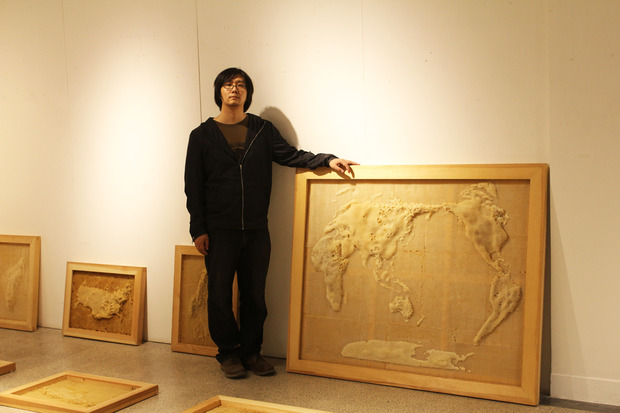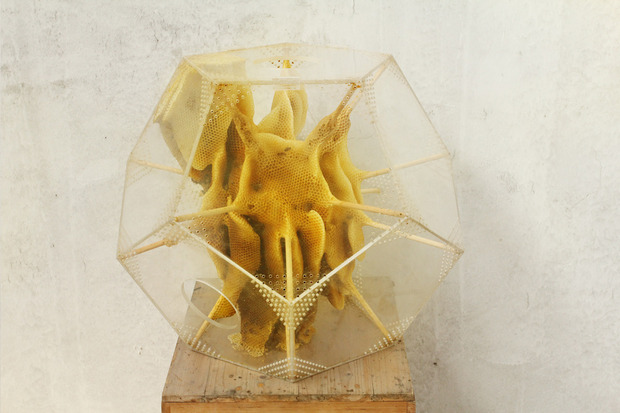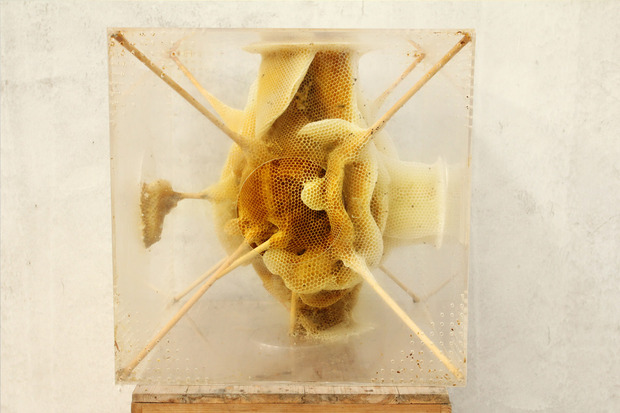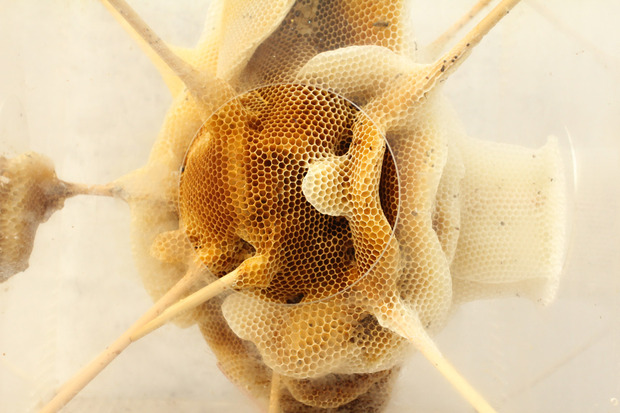Ren Ri’s Beeswax Sculptures
The Beijing-based artist devises works that explore the relationship between humans and nature, getting stung in the process


Artist Ren Ri (who trained at Tsinghua Academy of Art and Saint Petersburg State University in Russia) creates art that is influenced by his childhood—one that occurred amongst the beautiful scenery of Wuhan’s lush vegetation. “Back then, I was spending a lot of time observing animals and plants; my passion for moulding was parallel to an interest for insect ethology,” he recalls. Thus came the inspiration for his project “Yuansu II” which is crafted from the extraordinary medium of beeswax.

The artist’s unconventional medium is fascinating and has a life of its own—adding character and volatility to each piece of art. Ren Ri explains, “Beeswax is a very special material; it’s unstable and can change shape with temperature. The structure of wax cells is orthohexagonal, which is an inconceivable feature in the natural world and it’s a peculiarity of honeybees. Another reason behind the choice of bees is that I wanted to try to eliminate the subjectivity of the artist and the mediation of bees served this purpose.”

The name “Yuansu” (a neologism but also an assonance with the Chinese word for “element”) comes from Ren Ri’s long and close experience with bees: an artist and also a bee keeper, he sees in his work with bees as the truth of the relations between man and nature, which is often made by interference, harmony, destruction and moulding. He says “yuan” (translating to “element” or “unit”) is the essence from which life is shaped, “su” (meaning “mould”) stands for the manifestation of change, and “yuansu” as a whole can be considered a comprehension of the gestalt of life.

Ren Ri began keeping bees in 2008 and two years later felt his knowledge of honeybees had grown enough to start working on “Yuansu I: The Origin of Geometry”, a collection of maps made of beeswax. And for “Yuansu III” he pressed bees to his face—being stung many times—for a performance piece that explores the relationship between humans and animals. While his chosen medium is sometimes hazardous, it’s not just about shock value or gimmicks: “I didn’t intend to do anything violent or visually provocative, I just wanted to underline the relation between the human body and bees.”

Utilizing a different process with “Yuansu II”—a series of beeswax sculptures embedded in transparent plastic polyhedrons—the artist continues to experiment and explore the medium. Each polyhedrons is regular; every face is equal—in order to induce bees to create symmetrical wax structures and to eliminate the subjective interference of the artist. During the production of each piece, the queen bee is kept at the center of the geometric space (marked with one or more wooden sticks) which results in the other bees gathering around her, to start building around the center. Every seven days (a reference to the seven days of creation), Ren Ri changes the gravity of the honeycomb by rotating the box on a different side, determining it by a throw of dice.

The complexity of beeswax structures, the use of bees as a tool and medium, and the fascinating relationship between humans and nature are all signatures of Ren Ri’s work. And the artist intends to further research and explore the possibilities of using the resourceful insect as his peculiar but powerful artistic language.
The whole “Yuansu” series can be seen at Beijing’s
CAFA Museum until the 20 June 2014, while “Yuansu II” is on show at Hangzhou’s T-Museum during the exhibition “Fusion-Convergence,” until 7 August.
Photos by Alessando De Toni












